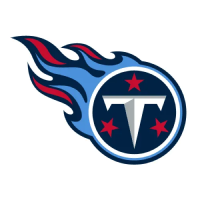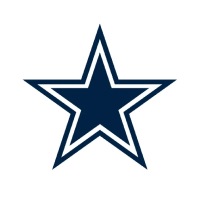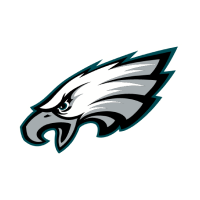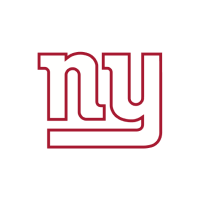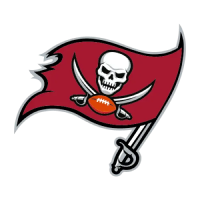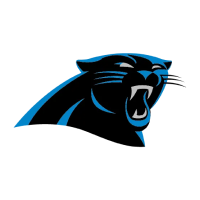It’s a new era in Foxboro following the departure of Tom Brady. New England failed to finish over .500 for the first time since 2000 and now enter a massive offseason for head coach and general manager Bill Belichick, who will be tasked with retooling a roster that is not only aging but lacking talent across the board.
It all starts under center, as it always has in New England. However, No. 12 isn’t involved anymore, which has raised questions surrounding whether Belichick will remain in Foxboro long enough to develop a quarterback via the draft, or take the quick route, acquiring a veteran via trade or free agency. In 2020, it was the latter, as Belichick took a flyer on rejuvenating Cam Newton’s career, and, well, it wasn’t a fit.
Unlike years prior, the AFC East no longer runs through Gillette Stadium. Buffalo and Miami have staked their claim to relevancy, and are primed to compete for more than just a division title in the years to come. The Bills and Dolphins each have taken their lumps, gone through the wringer, waiting their turn following the dynasty of Brady. They’ve rebuilt, re-tooled, and consistently added talent on either side of the ball for the unknown that lied ahead as each season arrived.
It’s an ever-present reality in the NFL that Belichick has not faced in almost two decades. In fact, you could call them spoiled with Brady at the helm. Belichick has never been tasked with consistently hitting on top prospects in the draft; that microscope simply isn’t there. In free agency, the Patriots have always been relatively quiet, adding plug-and-plays to suit Belichick's scheme, instead of paying up for headliners year-to-year.
This is new for the Patriots.
They again have questions under center, multiple free agents loom on the offensive line, and an overall lack of pop rests within the roster. Following a 7-9 record in 2020, New England now must flip its own narrative to stay competitive. So with that, using our Mock Draft Machine, I looked at which prospects the Patriots could target this April when the annual NFL draft rolls around. Here is my seven-round mock, including scheme fit, on each prospect:
Round 1 (No. 15 overall): Rashod Bateman, WR, Minnesota
New England has failed to add talent out wide for years. Prior to the selection of N’Keal Harry in 2019, the Patriots used just two selections—Chad Jackson (2006) and Aaron Dobson (2013)—within the first two rounds on receivers. Adding a pure playmaker in Bateman at No. 15 is a must.
Standing at 6-foot-1, Bateman “offers an impressive blend of route running, ball skills, and competitive toughness into a frame that should alleviate any concerns about his projections working in the boundary,” according to our own Kyle Crabbs.
Julian Edelman played in just six games in 2020 and looks to be beyond his prime. Jakobi Meyers has shown flashes, but has failed to record a touchdown in two seasons. Harry has failed to stay healthy, let alone produce and prove worthy of his first-round selection. That trio just won’t cut it. A true WR1 target for the mystery man signal-caller in New England this season is a must-add here in the first round.
Round 2 (No. 46 overall): Levi Onwuzurike, IDL, Washington
Although New England primarily works out of a 3-4, I envision Onwuzurike adding weight to become the anchor up front. With Lawrence Guy and Deatrich Wise set to enter the open market, adding an elite run-stuffer in Onwuzurike would be ideal to assist in New England’s subpar rush defense in 2020. At 6-foot-3, Onwuzurike is never out-leveraged in the trenches. He’s able to consistently work through opposing blocks with powerful hands and an agile lower half. He lives in gaps and rarely is single-blocked. His motor is off the charts and his feistiness as an interior lineman is everything you look for as the center point of your unit up front.
Round 3 (No. 96 overall): Aaron Banks, IOL, Notre Dame
Two starters in Joe Thuney and David Andrews could depart via free agency. Michael Onwenu could represent Thuney’s replacement, but the addition of Banks, a stout guard with scheme versatility in both gap and power schemes at Notre Dame, would provide an immediate impact from his first snap on the line.
New England represents one of the most “bland” offenses in the NFL, working in typical base sets with pop plays via play-action. Banks’ film won’t blow you away by any means, but his floor competes with any interior lineman in the class. What you see is what you get with Banks, and he would provide added juice on a veteran unit in Foxboro.
Round 4 (No. 120 overall): Ronnie Perkins, EDGE, Oklahoma
Perkins has become one of my favorite studies in this year’s class—the former Sooner is everywhere on film. He offers everything you look for in a modern defender with elite speed and excellent versatility. At Oklahoma, Perkins worked both with his hand in the dirt and standing up, an ideal fit in New England where I see him working primarily standing up in Chase Winovich’s role as the SAM. With Dont’a Hightower set to return as the “green dot” within the Patriots defense and 2020 second-round selection Josh Uche primed for a massive sophomore campaign, New England’s nucleus within their front seven could represent one of the league’s best.
Round 4 (No. 138 overall): Richard LeCounte III, S, Georgia
Within New England’s backend headlined by former Defensive Player of the Year Stephon Gilmore and the ironman duo in the McCourty twins, I could not help but take the rangy LeCounte here in the fourth. As far as scheme fit, it could not be a better match. LeCounte has much more room to progress and would not be relied upon to play a bulk of the snaps for Belichick’s unit right away. Ideally, he’d work as a rotational safety in subpackages at the outset of his career. Learning behind Patrick Chung and Devin McCourty would do wonders for LeCounte, as he has all the necessary tools to develop into a productive safety in the NFL.
Round 4 (No. 145 overall): Walker Little, OT, Stanford
Following Isaiah Wynn’s inability to stay healthy, the Patriots must address the tackle spot, either in the draft or via free agency. In the tackle class, Penei Sewell and Rashawn Slater have drawn much of the talk—and rightly so—but Little offers a tremendous amount of talent that frankly hasn’t received the correct amount of attention. He provides excellent length at 6-foot-7 with minimal flaws to his game. He touts excellent movement skills with an innate ability to identify twists and stunts while remaining in sync with his fundamental footwork.
Round 5 (No. 159 overall): Whop Philyor, WR, Indiana
Philyor projects as a prototypical slot wideout in the NFL, and if there’s anyone who knows how to scheme up targets in the shallow areas of an offense, it’s Belichick.
Philyor touts excellent YAC ability that would further expand New England’s run-heavy attack behind Damien Harris and Sony Michel. During his tenure at Indiana, Philyor was used in a variety of roles, allowing the Hoosiers to constantly have the ball in his hands, where he thrives. The Patriots are in desperate need of juice in their receiver room, and with the additions of two former Big Ten standouts in Bateman and Philyor, the Patriots add plenty of talent within an ever-important position of need.
Round 6 (No. 188 overall): Garret Wallow, LB, TCU
If I’m Belichick, I’m ecstatic to see Wallow here in the sixth. A former safety turned linebacker, Wallow’s game hinges upon his eyes and speed at the second level. Alongside Hightower—one of the NFL’s top linebackers when healthy—Wallow could develop into a steal late on day three. Adding depth alongside Uche and Winovich would be ideal. With his unique skill set, Wallow would compete for a major role from day one.
Round 6 (No. 197 overall): Sam Ehlinger, QB, Texas
Who knows what New England will do when it comes to their future under center, but the addition of Ehlinger just makes so much sense. He is a playmaker that attacks defenses without fear, with the knack for finding ways to win ball games whether it’s in the air or with his legs. A dual-threat talent similar to Newton, he fits what Belichick could be looking to do as he adjusts his offense to the post-Brady era. He’s not Trevor Lawrence by any means, but he’s exactly the type of kid you build a roster around for all the right reasons.
Ehlinger won’t blow you away with his intangibles or ability to throw the football 70 yards off-balance like Zach Wilson, but the Patriots’ offense similarly mirrors Texas in the makeup of their wideouts: big frames, large target radius, ability to attack the football at its highest point. Harry, Myers, and Bateman all have that ability, and under Belichick’s tutelage, Ehlinger’s game could blossom.
Round 7 (No. 237 overall): Tony Poljan, TE, Virginia
A former quarterback turned tight end, Poljan offers a throwback style of play at the tight end position. At 6-foot-7, he has excellent hands and a nasty motor, allowing the offense to utilize him in the run as an extension of the line. He has limitations as a route-runner and as a ball-carrier in space, but Poljan works seamlessly in the intermediate portions of the field offering a massive target for any signal-caller. He’s a constant mismatch and could develop into a larger role with extended snaps.
Filed In
Related Articles
NFL Draft
Arik Gilbert Doesn’t Need Big Workload To Be A Top NFL Draft Pick
- Aug 22, 2022
NFL Draft
2023 NFL Mock Draft: Marino 1.0
- Aug 22, 2022
Written By









